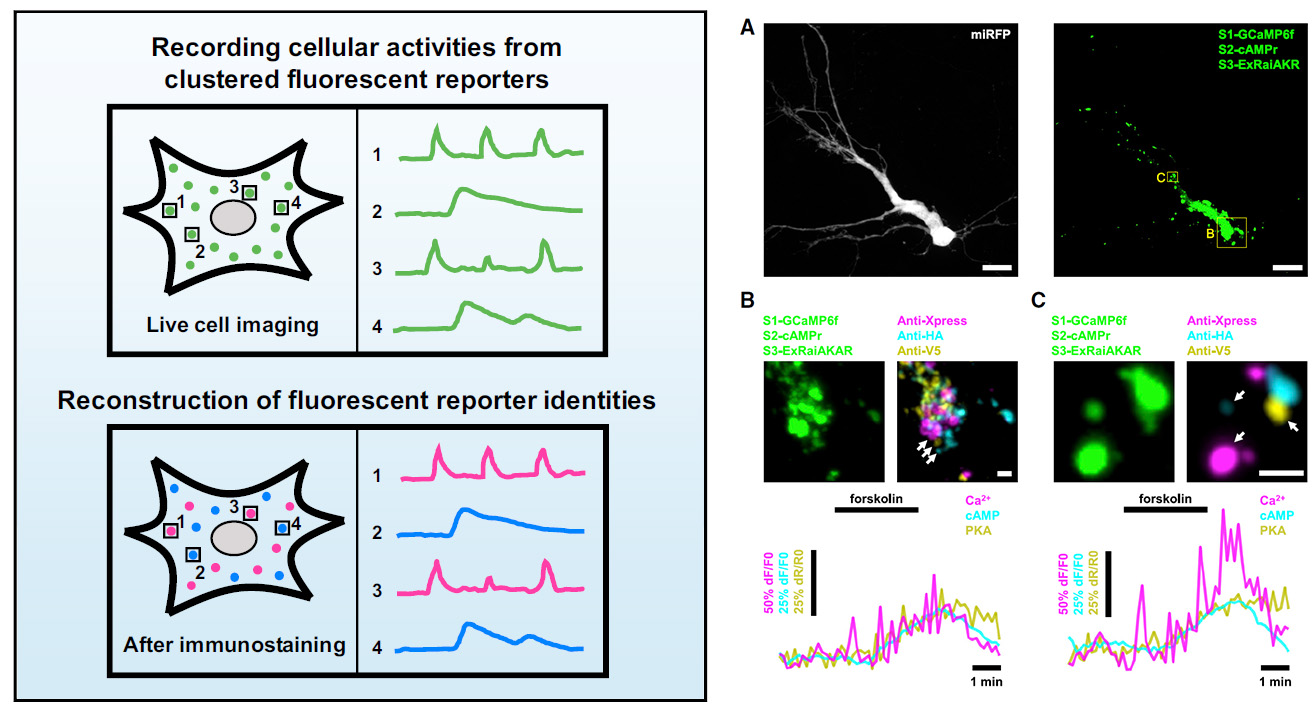
In order to analyze how a signal transduction network converts cellular inputs into cellular outputs, ideally one would measure the dynamics of many signals within the network simultaneously. We found that, by fusing a fluorescent reporter to a pair of self-assembling peptides, it could be stably clustered within cells at random points, distant enough to be resolved by a microscope but close enough to spatially sample the relevant biology. Because such clusters, which we call signaling reporter islands (SiRIs), can be modularly designed, they permit a set of fluorescent reporters to be efficiently adapted for simultaneous measurement of multiple nodes of a signal transduction network within single cells. We created SiRIs for indicators of second messengers and kinases and used them, in hippocampal neurons in culture and intact brain slices, to discover relationships between the speed of calcium signaling, and the amplitude of PKA signaling, upon receiving a cAMP-driving stimulus.
